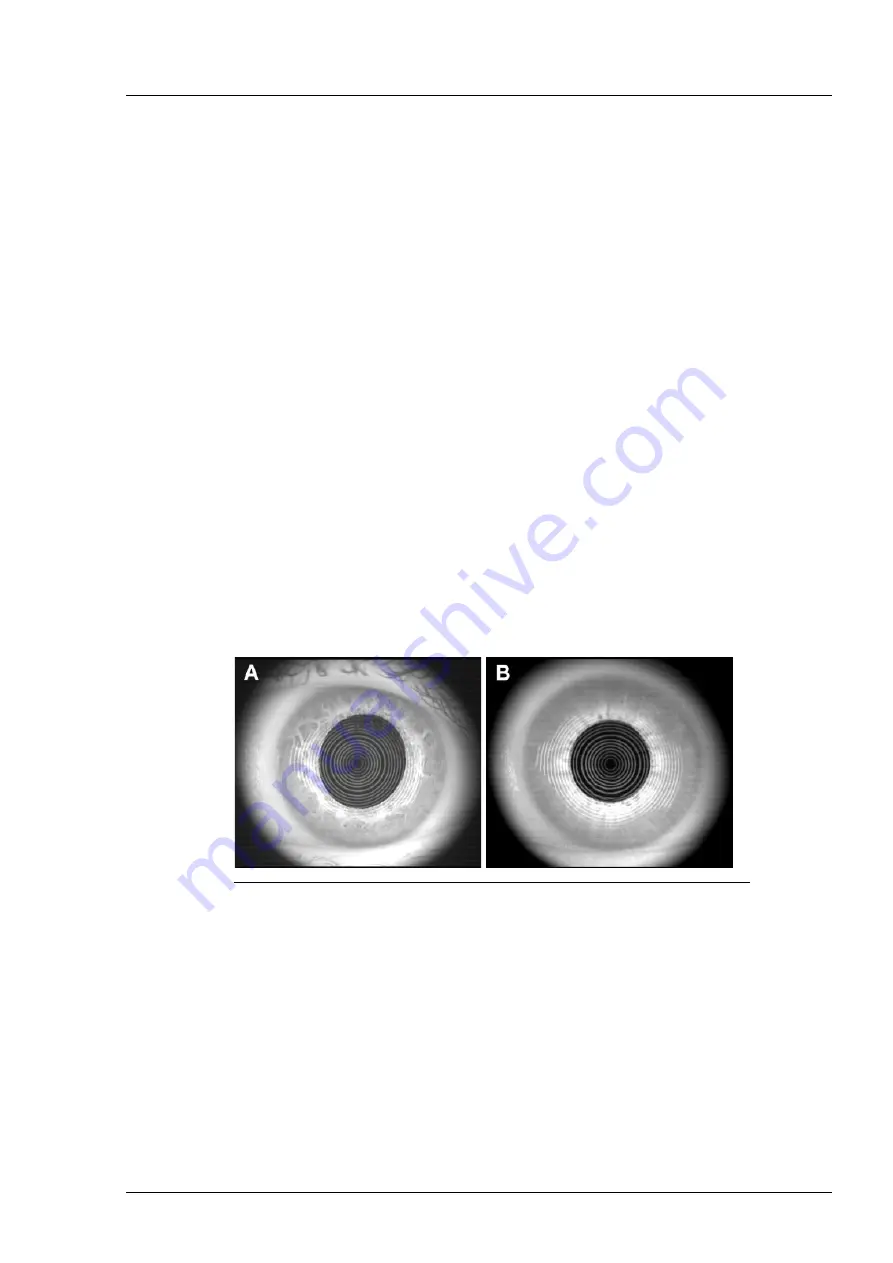
EN 20_070_0009I v1.5
Performance
specification
17
The Placido disc has ring-shaped, diffuse transparent openings that ensure
the rings are projected evenly on the eye. The eye, positioned in front of the
Placido disc, reflects the ring pattern of the Placido disc like a convex mirror.
The reflections on the corneal surface of the eye are recorded by a video
camera (CCD camera) behind the Placido disc.
The positions of the rings on the cornea change depending on the shape of
the corneal surface. An evenly curved corneal surface shows concentric,
non-deformed rings (
A
, Fig. 5). However, their width and spacing changes
depending on the radius of curvature of the cornea. The smaller the radius
of curvature of the cornea, the narrower the rings are and the closer they
move together. The flatter the cornea is, the wider the rings are and the
farther they are apart. If the shape of the corneal surface differs from the
shape of a spherical surface, the shape of the rings also changes (
B
, Fig. 5).
Software algorithms evaluate the shape and position of the rings to obtain
more detailed information on the shape of the corneal surface. The distance
between the rings is a measurement for the radius of curvature for the
corneal surface, and the deviation from a circular shape is a measure of
astigmatism. The evaluated data is represented in different two-dimensional
color-coded maps that show different characteristics (optical effects, local
curvature) of the cornea.
Fig. 5:
The image of the rings of the Placido disc on the camera for a normal cornea
(A)
and for a curved cornea (B).






























